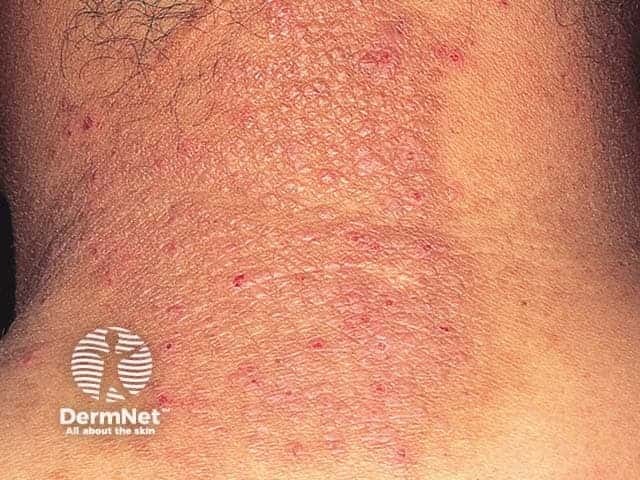Main menu
Common skin conditions

NEWS
Join DermNet PRO
Read more
Quick links
For each of the ten cases, study the image(s) and then answer the questions. You can click on the image to view a larger version if required.
Each case should take approximately five minutes to complete. There is a list of suggested further reading material at the end of the quiz.
When you finish the quiz, you can download a certificate.

What is the diagnosis?
The patient has primary lichen simplex chronicus affecting the back of his neck. This is also sometimes known as localised neurodermatitis. The appearance is typical; a well-demarcated scratched and hyperpigmented plaque of lichenification. This is a thickened, bumpy and dry patch showing increased skin markings. Note the distinct border on the right, indicating the relationship to rubbing with his left hand.
Advise on treatment.
Most patients present with lichen simplex when it has been present for many months or years. As it is a form of eczematous dermatitis, it is treated with potent or ultrapotent topical steroids, but frequently occlusion or intralesional injection is required for a quick response. The aim is to thin the affected skin down to a normal texture and to stop the itching. However, the patient must also want to stop scratching, which may be an intractable habit. Lichen simplex will not resolve if scratching continues. Other antipruritic measures may help, including dabbing with a cold moist cloth, tar preparations and oral antihistamines. Consider contact allergy in resistant or recurrent disease. Lichen simplex on the neck may appear identical to dermatitis caused by contact with nickel jewellery.